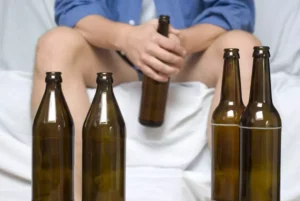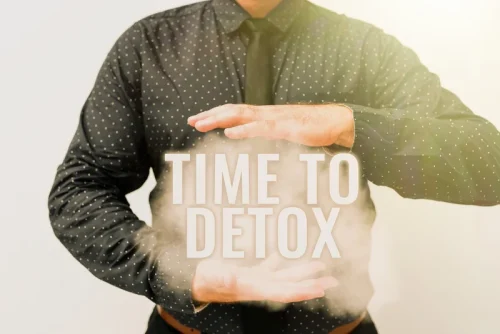
This is sufficient time for all short-term memory to be lost without transfer to long-term memory. Someone in a blackout will have no memory of having been given three words to remember and may think you are playing a trick on them. The movie Memento illustrated this condition on a permanent basis due to brain injury. The most https://ecosoberhouse.com/ common cause of permanent blackouts is thiamine deficiency due to poor diet in chronic alcoholics, called Korsakoff’s Syndrome. We believe everyone deserves access to accurate, unbiased information about mental health and addiction. That’s why we have a comprehensive set of treatment providers and don’t charge for inclusion.

Science News About Post-Traumatic Stress Disorder (PTSD)
Because in general, DeCarlo said, a single intoxicated witness cannot stand alone to convict someone of a crime. Corroboration from other witnesses or physical evidence are essential in these cases, though often difficult to obtain. That’s because memories are unstable and vulnerable to change early after an event. Once those memories get locked in, even if they contain inaccurate details, they will remain that way.
We’re here anytime, day or night – 24/7

PTSD blackouts can manifest in various forms, each with its own unique characteristics and implications for the individual experiencing them. One common type is dissociative amnesia, which involves the inability to recall important personal information, often related to traumatic events. This form of amnesia can be localized to specific events or generalized, affecting broader periods of an individual’s life.
Blackout effects on your body

The duration of PTSD blackouts can vary greatly, ranging from brief moments of disorientation to prolonged periods of lost time. Some individuals may experience “micro-blackouts” lasting only seconds, while others report episodes spanning hours or even days. The average duration of a PTSD blackout is difficult to quantify due to the highly individual nature of these experiences and the challenges in accurately measuring lost time. Like a camera with a faulty shutter, the mind sometimes clicks but fails to capture, leaving behind ptsd alcohol blackout a haunting void where memories should be. This poignant analogy aptly describes the experience of many individuals suffering from Post-Traumatic Stress Disorder (PTSD) who encounter blackouts, a distressing phenomenon that further complicates their journey through trauma recovery. Traumatic or stressful events trigger the release of endorphins, which are neurotransmitters that assist in reducing stress and pain.[4] However, when the traumatic or stressful event subsides, the increased levels of endorphins also begin to decline.
Assisting PTSD alcoholic family members may be especially difficult because people aren’t labels, they’re just a loved one struggling with an alcohol addiction. However, one of the greatest predictors of positive treatment outcomes is social support. Making a loved one feel supported and understood can increase the likelihood of effective treatment.
Questions about blackouts during routine medical visits could serve as an important simple screen for the risk of alcohol-related harms. First, the estimated residuals all have a person-mean of zero and reflect deviations not only from the person’s mean, but deviations from the person’s expected value on a given day in their time series. Thus, the inclusion of lagged residuals allow for the estimation of lagged within-person effects, and the inclusion of estimated person-level intercepts, linear, and quadratic slopes allow for the estimation of between-person effects. Second, use of the lagged residual scores of the outcome of interest explicitly addresses the serial auto-correlation.
These analyses shed light on processes that may underlie “self-medication” of PTSD symptoms. Gender-specific interventions targeting emotion dysregulation may be effective in reducing alcohol-related consequences in individuals with PTSD. Women may possibly benefit from interventions that focus on difficulties engaging in goal-directed behavior, while men may benefit from interventions that target impulse control difficulties when upset. • For drinkers, getting to the point of ‘blackout’ is surprisingly common. In a study of more than 1,000 college students, more than two-thirds – 66.4% – reported experiencing at least one blackout. Another analysis of more than 4,600 participants found that 52% of men and 39% of women reported having at least one blackout in their lifetime, while 21% of men and 11% of women reported having had three or more in one year.
- Second, we used these residual scores as predictors in the analytic models.
- With a brownout, you may be able to remember certain details from the period of time you were affected, but other portions of time can’t be recalled.
- The experts at The Recovery Village offer comprehensive treatment for substance use and co-occurring disorders.
- As we continue to deepen our understanding of the complex relationship between trauma, memory, and dissociation, new and more effective treatments are likely to emerge.
- Eyewitness testimony is most reliable soon after an incident and when people are sober, because of the general memory deficits caused by booze.
During a blackout, people can carry on conversations and complete complex tasks. I once interviewed a surgeon who had successfully removed a patient’s appendix while in a blackout. Though you can’t make anyone get help, you can offer a listening ear and be someone to walk beside as your loved one begins their recovery journey. To learn more, you can browse our list of rehabs treating alcohol addiction to see photos, reviews, insurance information, and more. One way to help a friend or family member struggling with their drinking is by noticing how much they drink. If they frequently black out, binge drink, or drink whenever they can, you can consider starting a conversation about how they’re feeling and how alcohol fits into their life.

Treatment and Management of PTSD Blackouts
Treatment should be given for both PTSD and SUD to lead to successful recovery. The good news is that treatment works if you have PTSD and SUD happening at the same time (co-occurring). Our approach centers on treating people with the same kindness and respect that we value for ourselves.
In one study, approximately two out of five students reported a binge episode (4 or more drinks for women, 5 or more for men) in the past two weeks (O’Malley & Johnston, 2002). There are various negative consequences of alcohol use among college students, including motor vehicular accidents, risky sex, sexual assault, fights, physical assaults, and fatalities (Hingson, Heeren, Winter, & Wechsler, 2005). Some people with PTSD, such as those in abusive relationships, may be living through ongoing trauma. In these cases, treatment is usually most effective when it addresses both the traumatic situation and the symptoms of PTSD. People who experience traumatic events or who have PTSD also may experience panic disorder, depression, substance use, or suicidal thoughts.



0 responses on "The Epidemiology of Post-Traumatic Stress Disorder and Alcohol Use Disorder PMC"